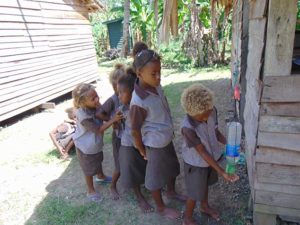October 2, 2019
By: Stuart Mason, SPATAP
When I grew up in London during the ’70s, my mother would repeat the mantra of, “Wash your hands, wash your hands.” It was drummed into me and it was easy to do. I would walk to the bathroom, turn on the hot tap, and pick up the soap.
Now, I would like to invite you, the reader, to partake in an experiment.
Imagine you are at home. Count every water outlet you can find. If you have a mixer tap with both hot and colder water, count that as 2 water outlets. Include showers, baths, toilets, washing machines, outside taps, washroom taps, swimming pools, boreholes, plumbing, dishwashers, and so on.
In the developed world, the average number of water outlets in a home is between 20-40. This is real access to water and it makes the simple act of handwashing easy and accessible. My mother’s mantra – “wash your hands, wash your hands” – could easily be practiced in these circumstances and regular handwashing behaviour could be sustained.
In contrast, over 900 million children around the world have no hygiene service in their schools. This makes it impossible to wash their hands, as there are no taps available.
 From my own experience, I have found staggering examples from the South Pacific and Africa, where there are as many as 1,000 children sharing one tap. In Papa New Guinea, we found 8,000 children sharing 8 taps total. In Malawi, the numbers are even worse, with 6,000 children sharing 1 tap. Furthermore, at the Talivu School in Fiji, 300 children, teachers, and staff have to walk over 250 meters to a tap. Unfortunately, for many schools in the developing world, this is the norm.
From my own experience, I have found staggering examples from the South Pacific and Africa, where there are as many as 1,000 children sharing one tap. In Papa New Guinea, we found 8,000 children sharing 8 taps total. In Malawi, the numbers are even worse, with 6,000 children sharing 1 tap. Furthermore, at the Talivu School in Fiji, 300 children, teachers, and staff have to walk over 250 meters to a tap. Unfortunately, for many schools in the developing world, this is the norm.
When I say one tap, I am not talking about a shiny, clean tap that has sensors to start and stop the flow of water, or a dedicated soap dispenser either. The taps often found in these situations are leaking, unclean, and unhygienic. They may have an irregular or erratic flow of water and are often supplied with rainwater full of mosquito larvae.
Infrastructure required to install taps, pipes, filtration systems, and access points can be costly. Many of the schools I have visited have no such resources, and the result means overlooking the practice of handwashing with soap.
As a solution to this problem, I work with a Rotary Project called “Hand Hygiene for Health.” The project visits schools without taps or basic hygiene services and supplies a portable tap for every classroom and toilet. This also includes taps for all staff. The portable tap is operated and maintained by the classroom, and the ‘handwashing routine’ and ‘behaviour change’ that is created in just a few hours can be sustained after 3 days. 
The students use a roster system to maintain and refill the portable tap and both the students and teachers oversee this process. Teachers also appoint a handwashing champion for the class; they are responsible for ensuring everyone has clean hands and no one is wasting water. This job has immediately become a favourite for students throughout the school day. For many of the children, this is the first time their class has had its own dedicated tap.
This simple system has resulted in handwashing becoming a fun and regulated activity in the classroom and learning environment. Students are now in charge of their own hygiene through this classroom tap. The results are better than we could have dreamed, with many students inspired to study microbiology or bring hygiene into their villages through school projects beyond ours.
No pipes, no intensive labor, and no costly infrastructure needed. Our system allows a student to install a classroom tap in ten seconds, and provides an immediate handwashing solution for any classroom. Studies show the ‘train the teacher’ model used allows for better adaption among newer students. That is, when a new intake of students arrives, they simply mimic their peers and continue the handwashing procedure that has already been implemented.
Water is a scarce resource in many parts of the world. This project demonstrates that implementing a portable tap that holds 1.5 litres of water is enough for 60 hand washes with soap. The workshop is well received and the excitement of having a classroom tap is displayed by many smiling faces and lovely clean hands all around.
There are 4 things needed to have handwashing behaviour change in a classroom setting. They are 1. A clean tap 2. Running water 3. Access to soap and 4. No more than 25 students per tap per handwashing session. Without these components, it is impossible to create handwashing behaviour change.
Our simple handwashing project ticks all boxes. We have seen many success stories using this system. In a school of 500 students, we can arrive at 9am and by lunch time, the whole school, including teachers and staff, are regularly washing their hands with running water and soap.
To conclude, our mission is clean hands for all and sustainable behaviour change.
For more information on how we help make clean hands for all, visit www.handhygieneforhealth.org and watch our video here.
Photos by Stuart Mason. All authority to use images granted.
Subscribe to our mailing list to receive regular updates from the Global Handwashing Partnership or follow us on social media.
© 2017 The Global Handwashing Partnership (GHP).